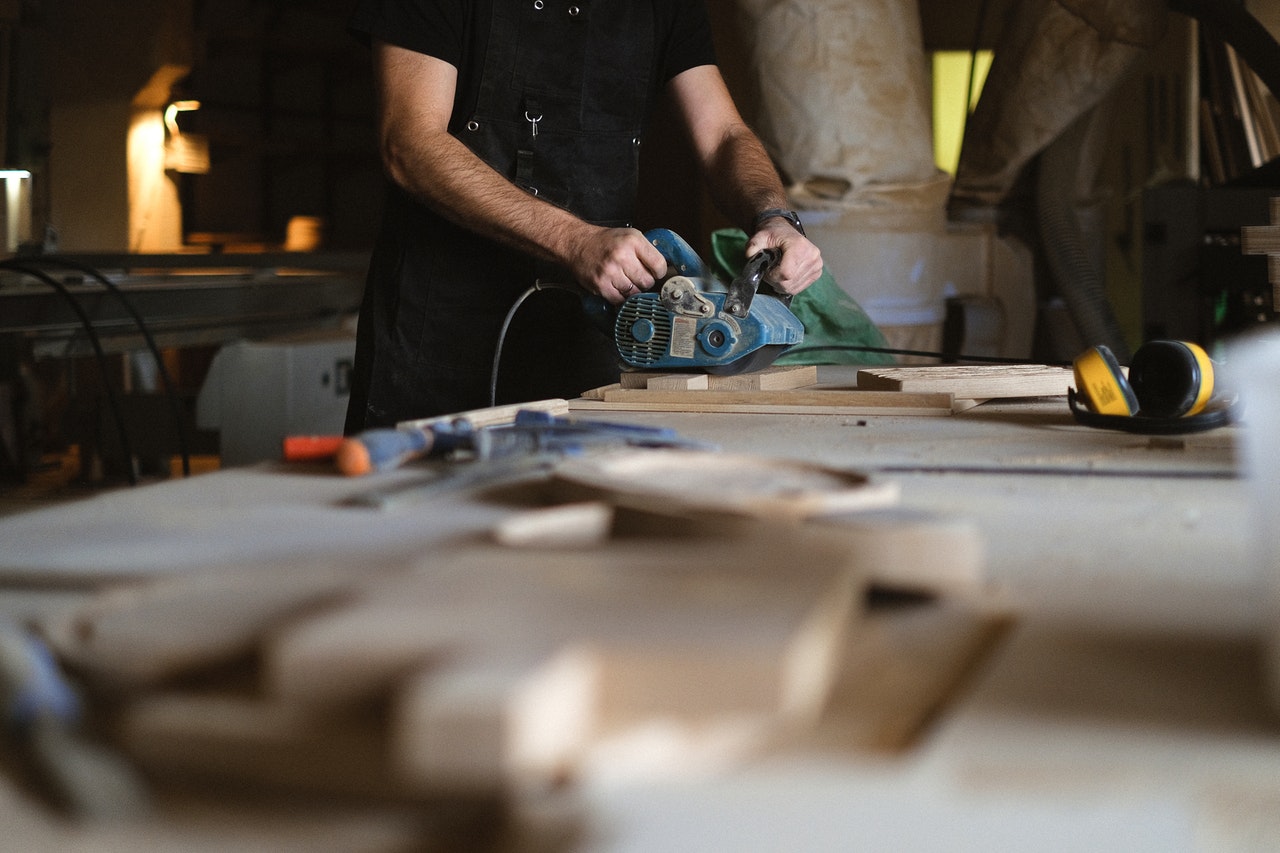If you acquired rough lumber, or when you are faced with a lot of wood sanding tasks, a belt sander can get the job done for you. Rather than wasting your time sanding rough wood manually, a belt sander will make things easier. It is a heavy-duty tool that depends on sanding belts that are wrapped around the base. It is designed to clean up different types of materials, even the most gnarly ones. Learning how to use a belt sander is not as difficult as it may seem. In this article, we will learn how to use this tool effectively.
What You Need
- Belt sander
- Clamps
- Safety goggles
- Ventilation mask
Step-by-Step Instructions
Step 1 – Choose the Right Belt

Before starting to sand, it is very important to choose the right sanding belt to do the task. You may want to begin with a belt that features a coarser belt, like 40, 80, or 100. This helps in removing most of the finishes and scuffs. Later on, you can move to a belt that features a finer grit, like 180, to complete a project.
Next, insert the belt into the sander. To do this, release the lever which is typically found on a side of the sander, sliding it to the wheels. Secure the lever by pressing it closed.
Step 2 – Clamp the Material

It is important to secure the material that you are working on. Clamp it on your work surface. This will help in preventing the board from possibly slipping while sanding it. While doing this part of the process, it is recommended to wear a ventilation mask and safety goggles. These will protect you from the wood dust that usually accumulates in the air while you sand.
Step 3 – Begin the Sanding Process

To start the process, turn the belt sander on, allowing it to run for a few seconds as it gets up to speed. Begin with the rear part of the sander, easing the belt gently on the wood. Create long and even strokes in the direction of the wood grain. Apply consistent pressure to the belt sander, though avoid firmly pressing it down as this could potentially gouge the board. Check the output frequently as you continue to sand.
Step 4 – Finish Up!

After completing the sanding process, take the belt sander off the board, checking into the ventilation bag. If it is already full, take the bag off from the sander, emptying it before reattaching. Then, switch the sanding belt out for another one that comes in a finer grit, repeating the process as you complete your work.
Step 5 – Tips to Remember

To achieve the best finish, here are some tips that you can take into consideration:
- When working on a surface with a hand belt sander, make sure that your clothes are off the way. Note that belt sanders are designed to feature a couple of torque, which means that loose-fitting clothing needs to be kept away from the belt sander.
- After turning the sander on, allow the motor to gain enough momentum. Use both hands to ease the sander down slowly. One hand should be on the trigger handle, while the other hand on the forward handle. Doing the latter will ensure stability. The rear roller needs to be in contact with the wood first, while the other parts should be faced down on the wood.
- The belt should have a firm grip on the wood, driving the sander along. You may work on a scrap of wood while making sure that it is not kept in a spot.
- Belt sanders, especially those that come with a coarse belt, may yank through stock quite fast. As such, it is vital to keep the belt sander moving.
- Spend some time to repeatedly check the progress. When using a sander, it is recommended to work in smaller bits and applying a little pressure, than tearing through or pushing down the wood. This will only result in creating cuts that might only need to be amended later on.
- Ensure that the belt sander is positioned flat. Avoid pulling back, with the tip of the sander being off the edge. You might end up cutting too much wood, requiring you to build it again with putty.
Conclusion
Learning how to use a belt sander efficiently and effectively will allow you to save time while working on your woodworking project. If you do not have a belt sander, you can get one from a local hardware store. If you cannot afford to purchase one yet, you may want to look for sources that offer rental power tools for an affordable fee. This is an amazing option if you are a beginner who may not have the actual need or the space to store a huge tool in your shed. Why not share your story with us? Leave your thoughts in the comments section.


Leave a Reply